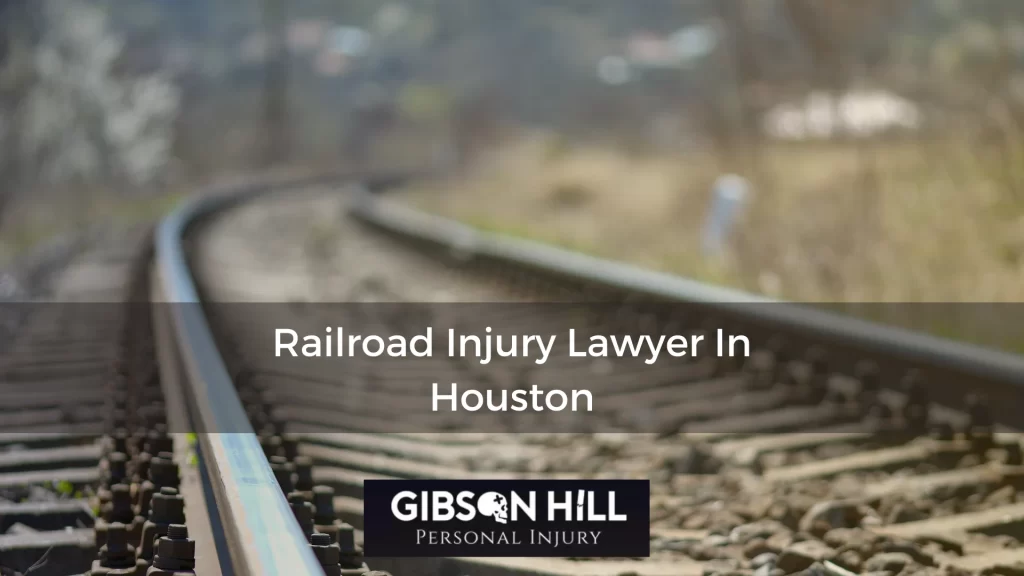
You can seek benefits under the Federal Employers Liability Act (FELA) if a railroad worker is injured. FELA protects individuals injured while performing work-related duties in the railroad industry. The Houston railroad injury lawyers from Gibson Hill Personal Injury may be able to represent you in your FELA claim to ensure you receive the maximum benefits possible.
Unlike workers’ compensation benefits, which usually only cover medical costs and a portion of lost wages, FELA allows railroad workers to recover compensation for pain and suffering and other damages not covered under workers’ compensation policies.
However, FELA is a fault-based system, meaning negligence must be proven during the claims process. It must be determined that your employer or another party was negligent in their actions and that’s what caused your injury in order to win the maximum compensation available. To qualify for payment, you have to establish the following elements:
- The accident resulting in your injury occurred during the course and scope of your employment;
- The railroad you worked on operates or services at least two states; and
- The railroad contributed to your injury or illness.
FELA cases are undoubtedly complex, but we are highly experienced in this area of law and will work skillfully to secure the benefits you need. To find out how Gibson Hill Personal Injury can help you call (713) 659-4000 to speak with a Houston railroad injury lawyer.
Federal Railroad Administration
The Federal Railroad Administration (FRA) regulates the working conditions for railroad workers. Federal regulations require employers to take specific safety measures, so their employees don’t get exposed to dangerous working conditions.
Locomotive Cab Working Conditions
One requirement by the FRA is the conditions of a locomotive cab. Under these guidelines, railroad companies must:
- Keep sanitary facilities clean
- Lower noise levels in the cab
- Provide ear protection to workers
- Keep temperatures at a comfortable level
- Keep vibration to a minimum
- Make use of a railroad company’s accident history
Ballast Accidents
Railroad tracks are placed on coarse gravel or crushed rock called ballast. It needs constant maintenance so that trains can run properly. Unfortunately, this type of material can create unsteady footing for railroad workers. Anyone walking on it can lose their balance and get hurt.
Maintenance workers must regularly inspect the ballast for any defects. If they find a defect, they must promptly change or maintain it.
Hours of Service Act
Fatigue is a common issue with railroad workers. They typically work long hours and end up operating dangerous machinery while they’re tired or falling asleep. The railroad industry is demanding; some employers ask their employees to perform off-duty work.
The FRA enforces the Hours of Service Act to protect railroad employees and ensure they don’t work too many consecutive hours. Workers are allowed to work a maximum of twelve hours and then must spend ten hours off-duty.
What Are the Most Common Causes of Houston Railroad Injuries?
Railroad companies, including commuter rail lines and freight companies, have a legal obligation to ensure their employees’ safety. Despite state and federal regulations, railroads are extremely dangerous and can cause severe injuries.
Whenever you set foot on a railroad, you expose yourself to hazardous materials, dangerous tools and equipment, and strenuous working conditions. Even if you follow proper safety protocol, you could become the victim of a railroad accident because of someone else’s negligence.
Under the Federal Employers Liability Act, you can hold your employer liable for your injury or illness for the following causes:
- Unsafe working environment
- Faulty tools or equipment
- Defective safety devices
- Lack of safety inspections
- Safety hazards
- Failure to enforce rules and regulations
- Inadequate supervision and training
- Unreasonable work quotas
Any of the situations listed above can result in severe injury or death. It’s up to your employer to ensure that there are no visible and obvious hazards while you’re working and that you have access to safety gear. Any failure to provide a risk-free environment could be grounds for a FELA claim.
Proving the Railroad Owner or Operator was Negligent
You don’t automatically receive FELA compensation just because you suffered some injury. You have to be able to prove negligence on the part of the railroad owner or operator first. Once you prove they were negligent, you can pursue full compensation for your injuries and damages.
FELA is supposed to protect railroad workers; however, many railroad companies try to avoid taking responsibility for their employees’ injuries. That can make getting the money you deserve a bit more complicated.
To build a solid case, you should base your claim on negligence and prove that the following elements existed at the time of your railroad accident:
- Duty: The negligent party was supposed to act in a certain way and owed you a duty to do so;
- Breach of duty: The at-fault party breached that duty;
- Cause, in fact: Your injury was the result of the responsible party’s breach of duty;
- Proximate cause: A reasonable person would know that their breach of duty would result in injury; and
- Damages: You suffered damages from the accident.
Filing a FELA Claim for Damages
If you file a FELA claim to collect compensation for damages, you must establish negligence before moving forward. FELA states that an employer is responsible for providing the following:
- Proper equipment maintenance
- Tools and safety tools
- Conducting routine inspections for hazards
- Warning employees of unsafe conditions
- Training for the job and equipment
The damages available in a railroad injury case include:
- Past and future loss of earnings
- Necessary medical expenses
- Mental trauma
- Pain and suffering
- Physical impairment
- Loss of companionship
Steps to take After a Railroad Injury in Houston
 If you suffer any injury or get diagnosed with an illness because of your railroad job, you should immediately take action. The steps outlined below are crucial to proving negligence and ensuring you receive the maximum compensation.
If you suffer any injury or get diagnosed with an illness because of your railroad job, you should immediately take action. The steps outlined below are crucial to proving negligence and ensuring you receive the maximum compensation.
- Take note of what the at-fault party did or failed to do that caused your injury
- Report the accident to your supervisor and complete an injury report
- Don’t admit any fault for your accident or volunteer unnecessary information
- Write down the names and phone numbers of everyone who witnessed you get hurt
- Take photos of the scene, focusing on any hazards or damage
- Seek treatment from a doctor and continue treating until they release you from their care
- File a FELA claim
- Hire a Houston railroad injury lawyer
Throughout your claim, you should know the documentation you’re submitting and any forms you’re given to sign. An experienced personal injury lawyer in Houston will walk you through the process and ensure you don’t do anything that could hinder the outcome of your case.
FELA Statute of Limitations
Under the Federal Employers Liability Act, a three-year statute of limitations exists to file a lawsuit for a railroad injury or illness. If you don’t sue before the deadline, your case will likely get dismissed, and you won’t be able to collect compensation through a FELA lawsuit.
It’s important to note the difference between an injury and illness regarding the statute of limitations. When you sustain an injury, it’s obvious. For example, the three-year clock would begin on the day that you break a bone.
On the other hand, some illnesses could take years to develop. You might not experience any symptoms from exposure to a toxic chemical until years later. In that situation, the three-year clock begins on the first date you became aware of the symptoms of your illness.
Why Choose Gibson Hill Personal Injury
Gibson Hill Personal Injury has the experience, knowledge, resources, and skills to handle railroad injury cases. We understand the complexities involved in your case and how to maximize a client’s claim. When you hire us, we will work efficiently to ensure you receive the fair compensation you deserve.
Getting injured on the job can upend anyone’s life. If you’re already struggling financially, adding expensive medical bills can create an overwhelming situation. It’s our goal to relieve the burden you’re carrying and take care of the complicated legal process for you.
We take cases on a contingency basis and also offer free consultations to prospective clients. If you’re suffering from a railroad injury and don’t know what steps to take next, we’ll be happy to meet with you. There’s no risk in discussing your accident with one of our Houston railroad injury lawyers and getting legal advice.
We have a dedicated team of professionals available 24/7 to answer your questions, update you on the status of your case, and be there for you when you need us. We know you’re dealing with a traumatic experience, and you can depend on us to help you get through it.
Schedule your free consultation with a Houston railroad injury lawyer by calling (713) 659-4000, and we’ll help you get on the road to recovery.




